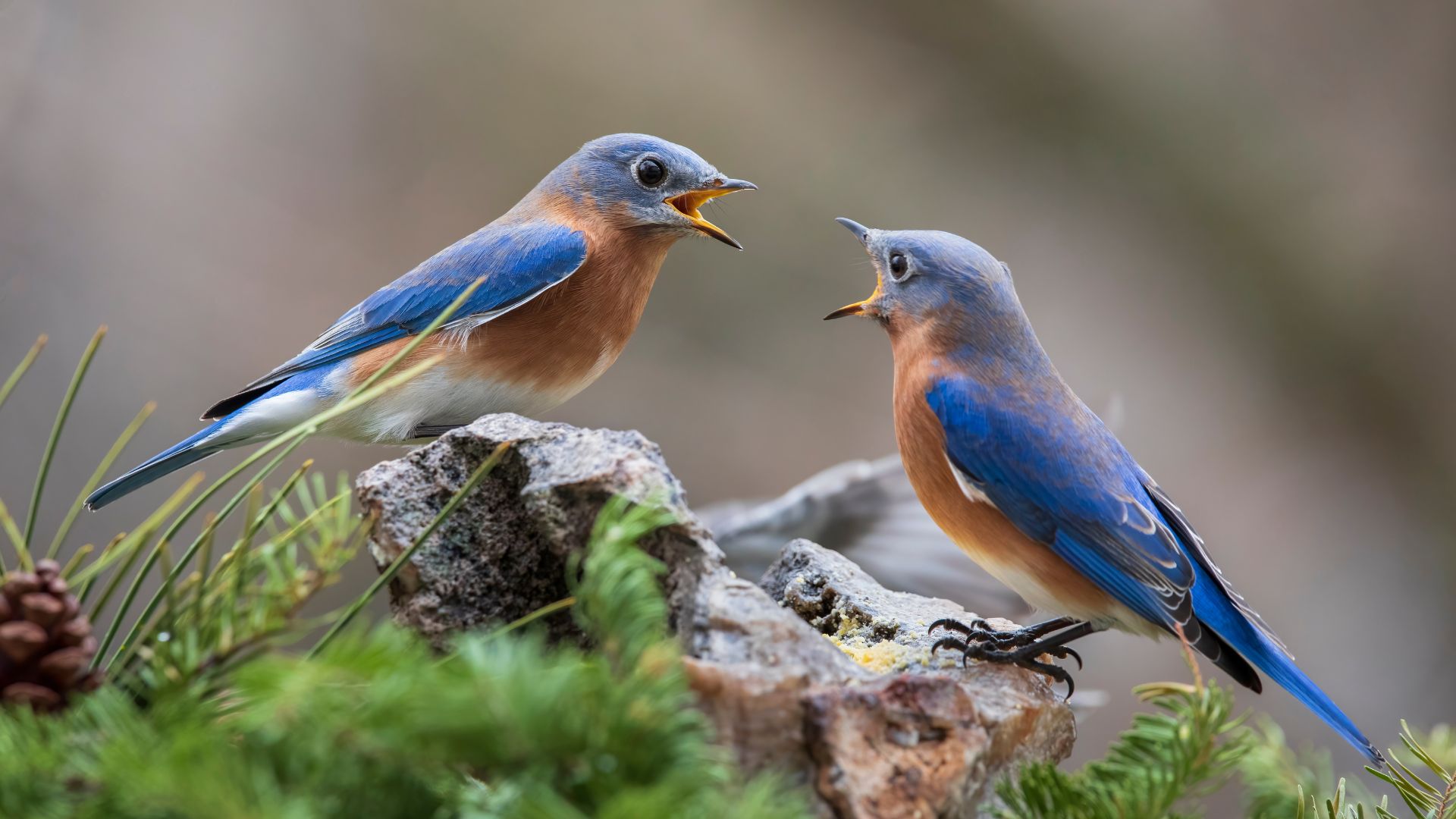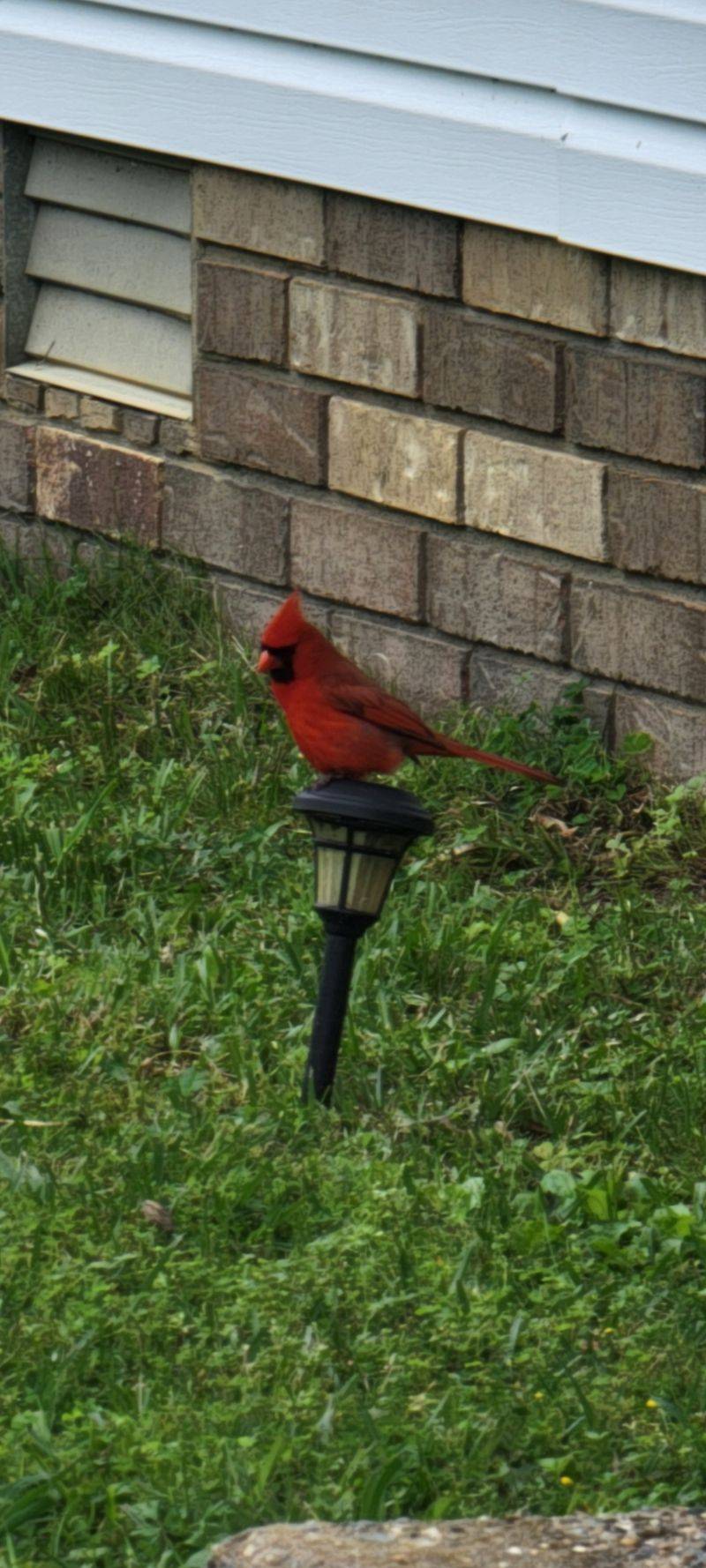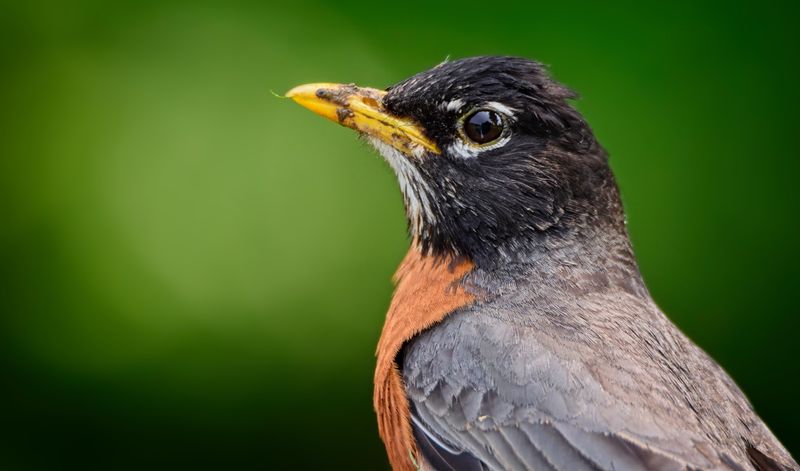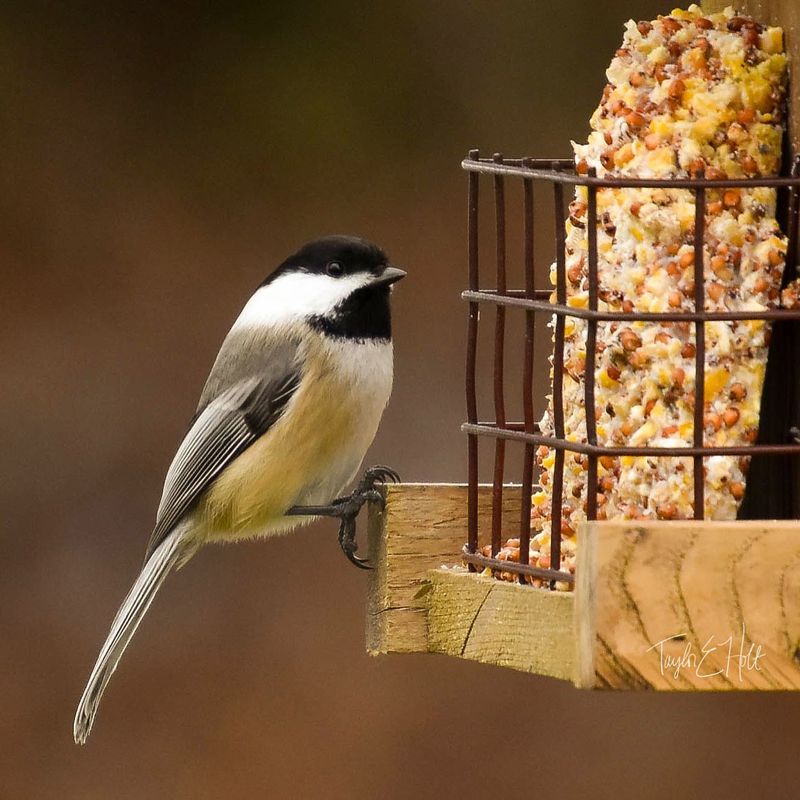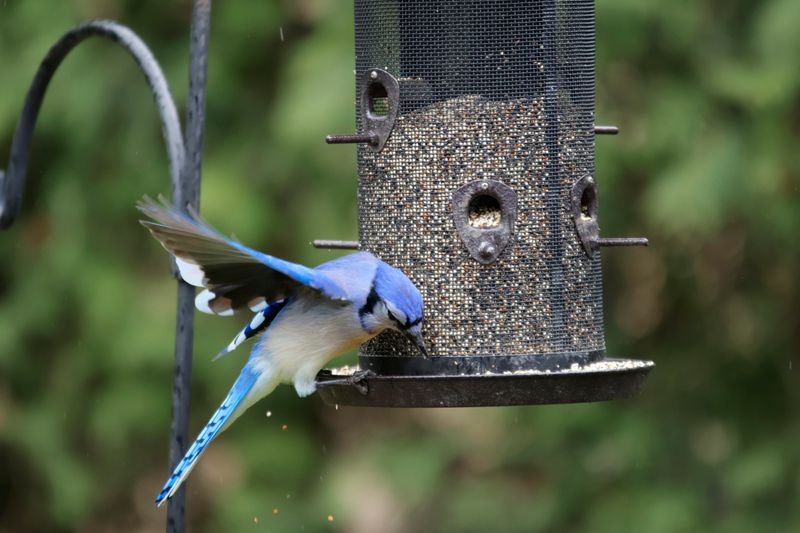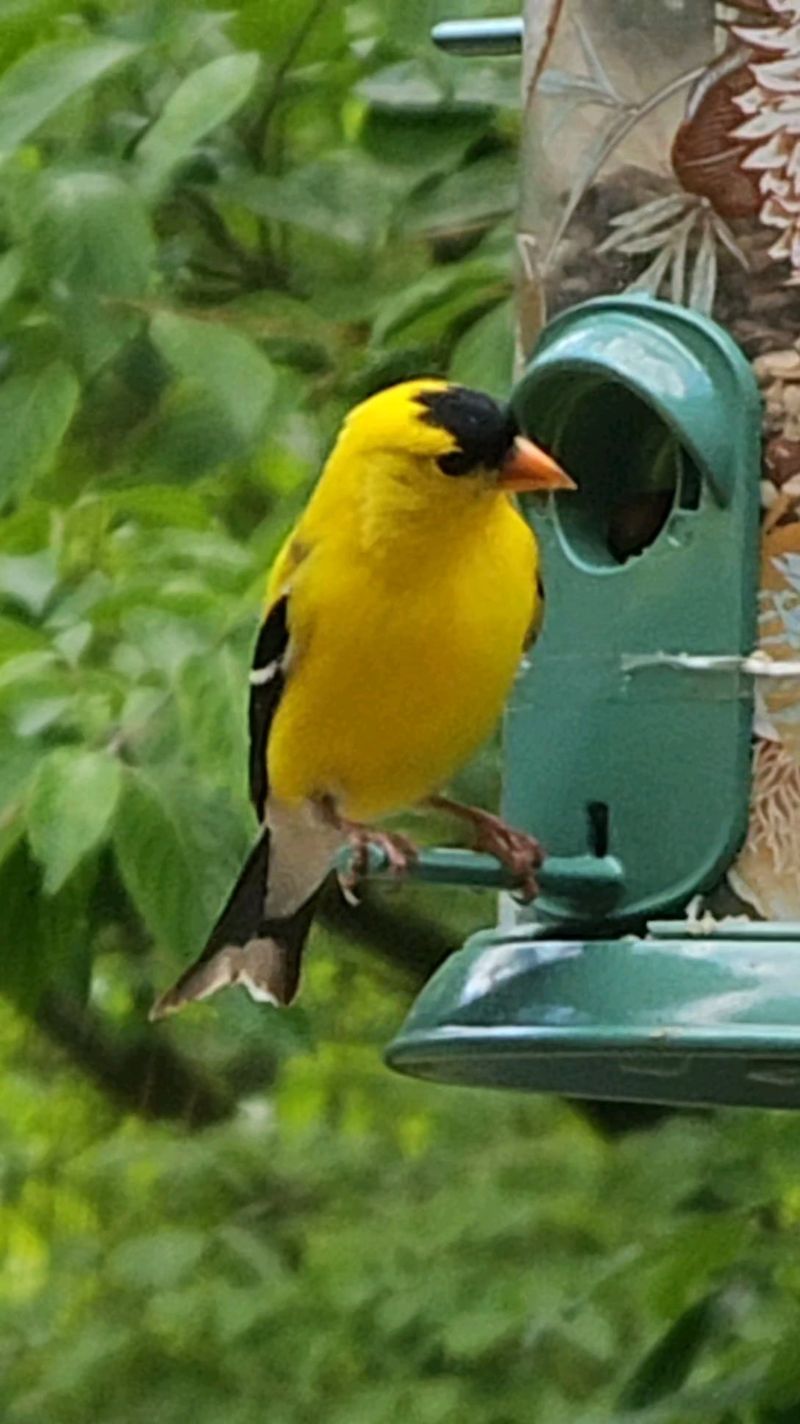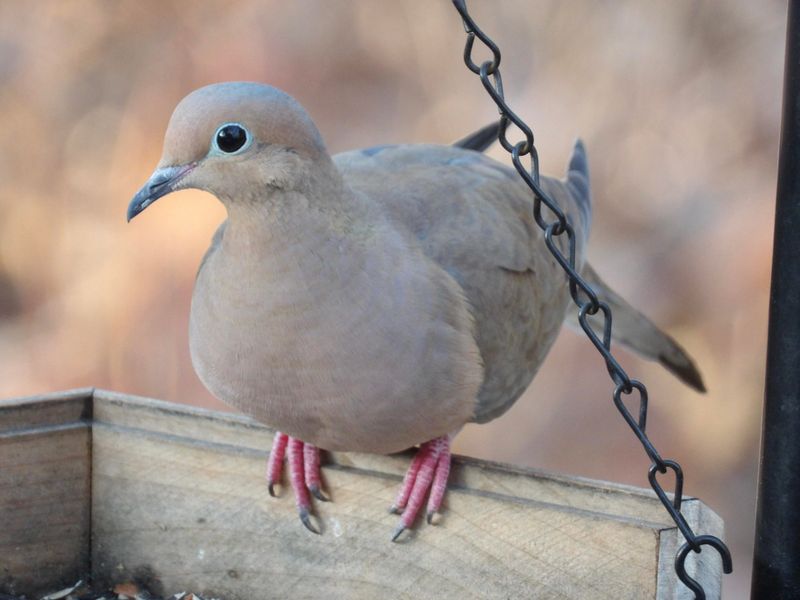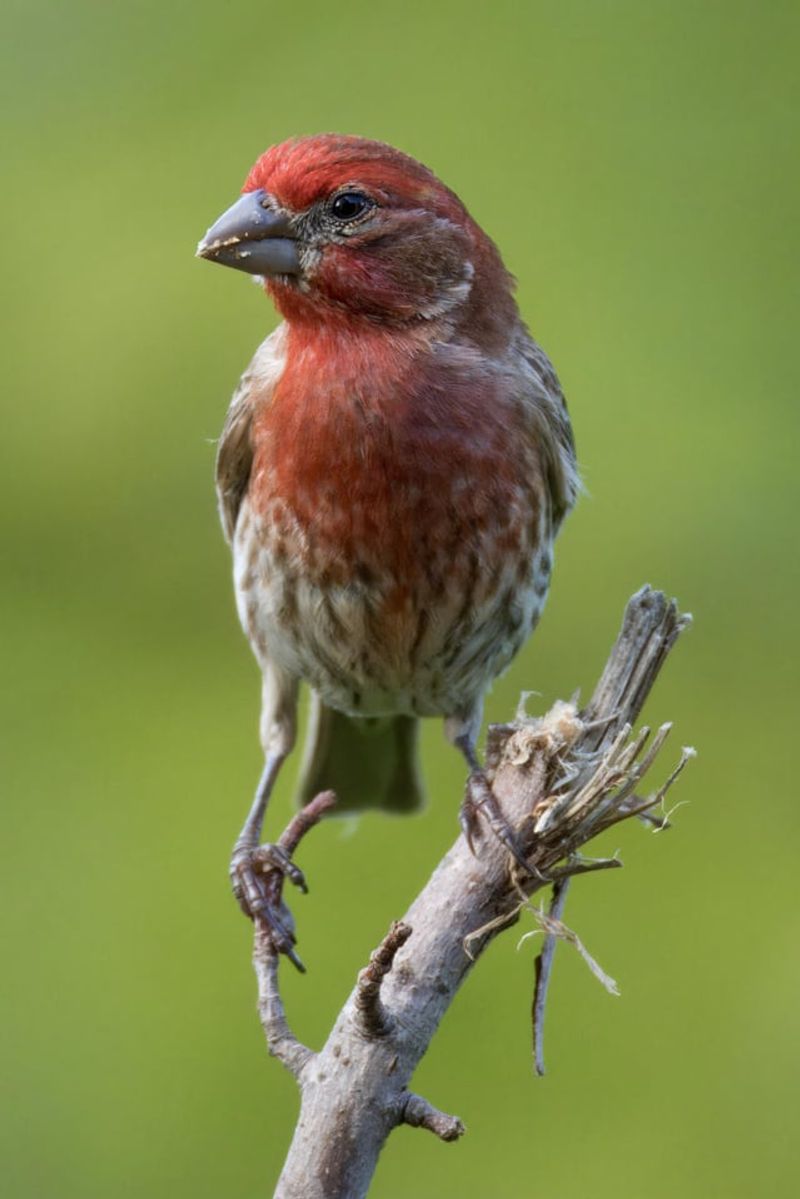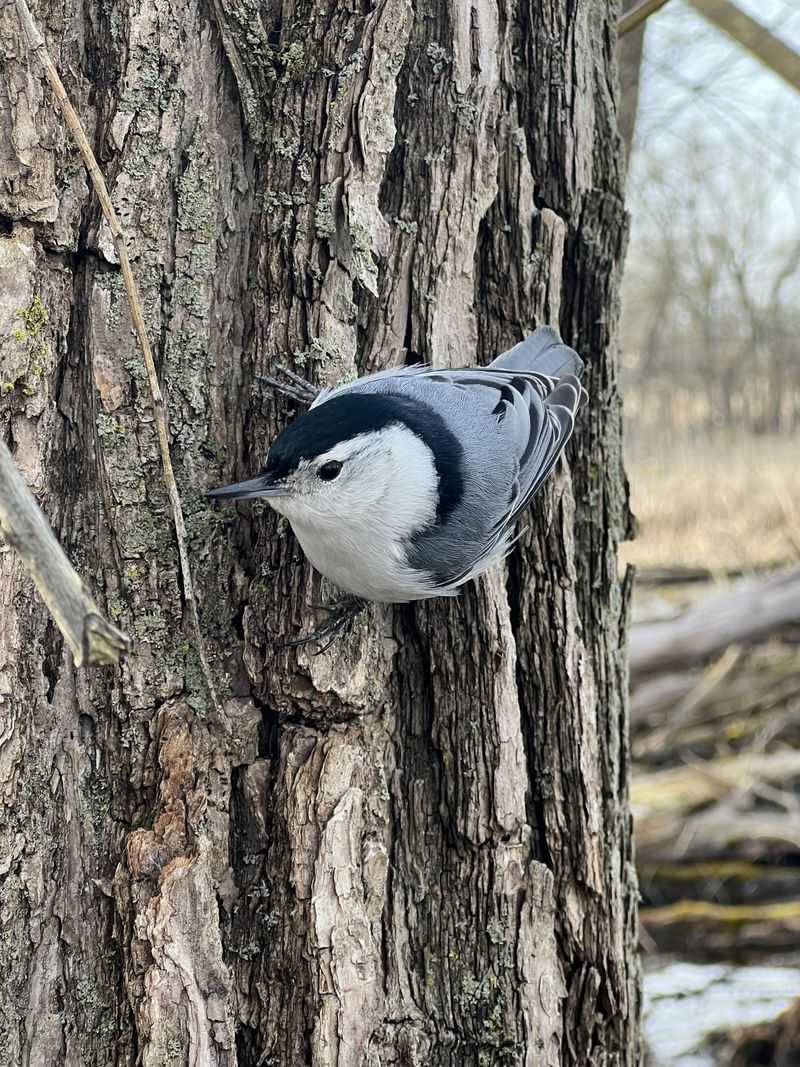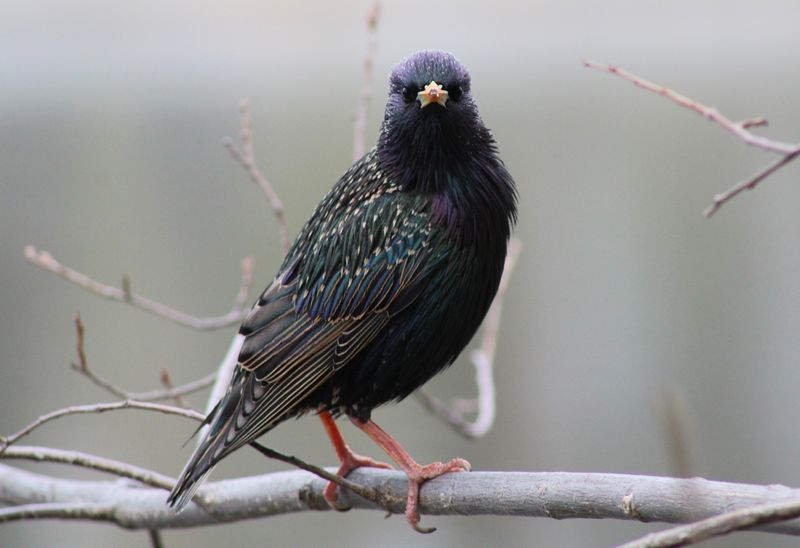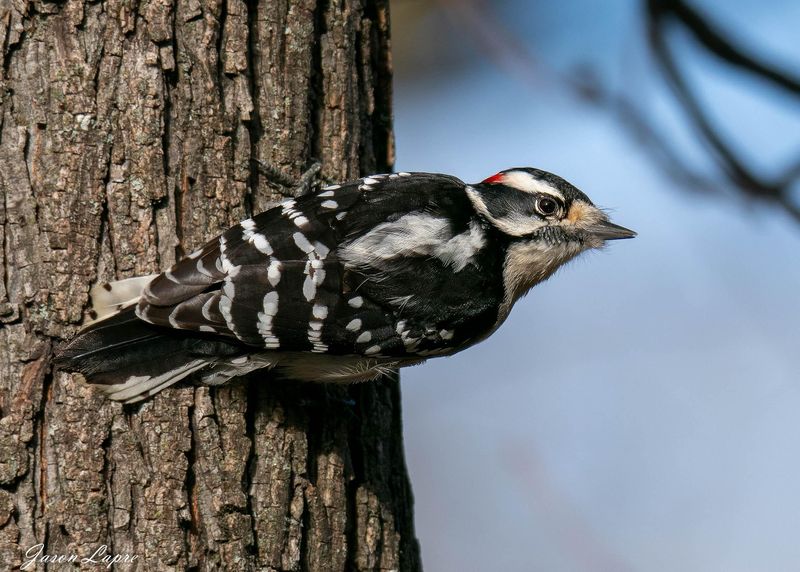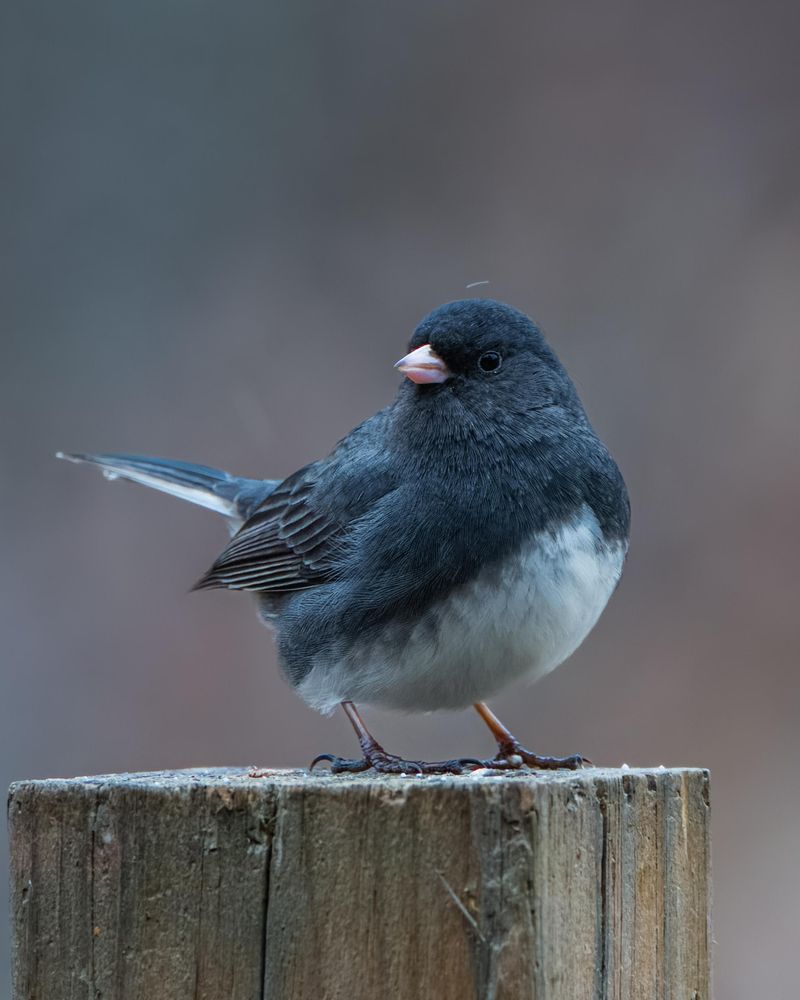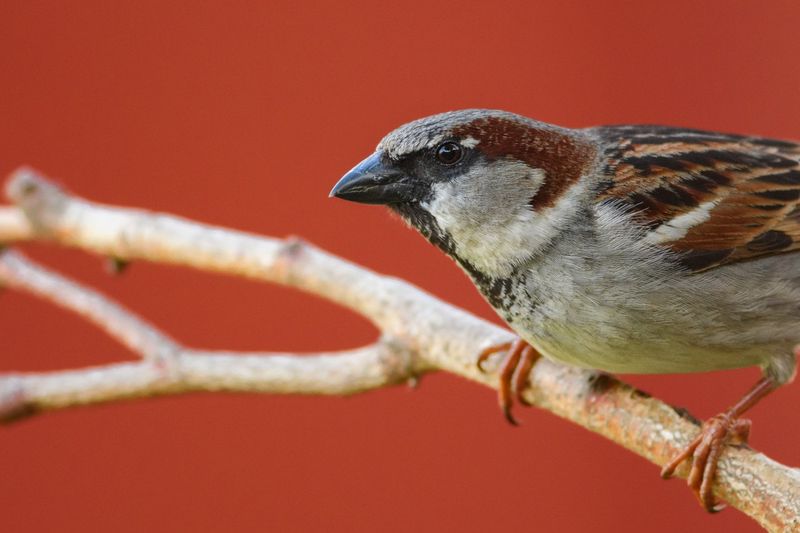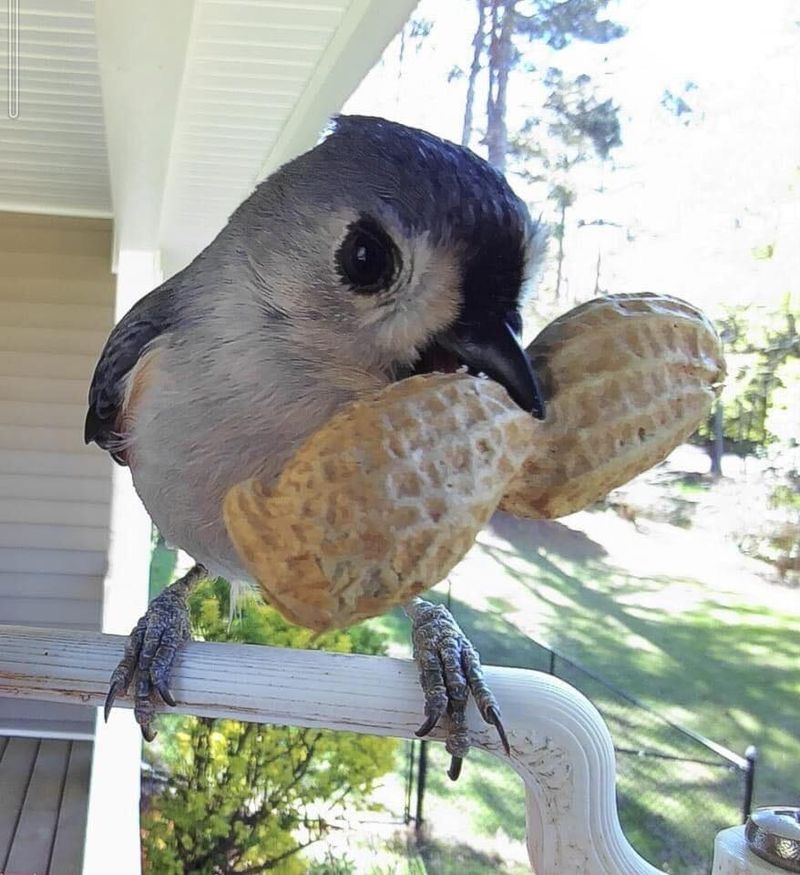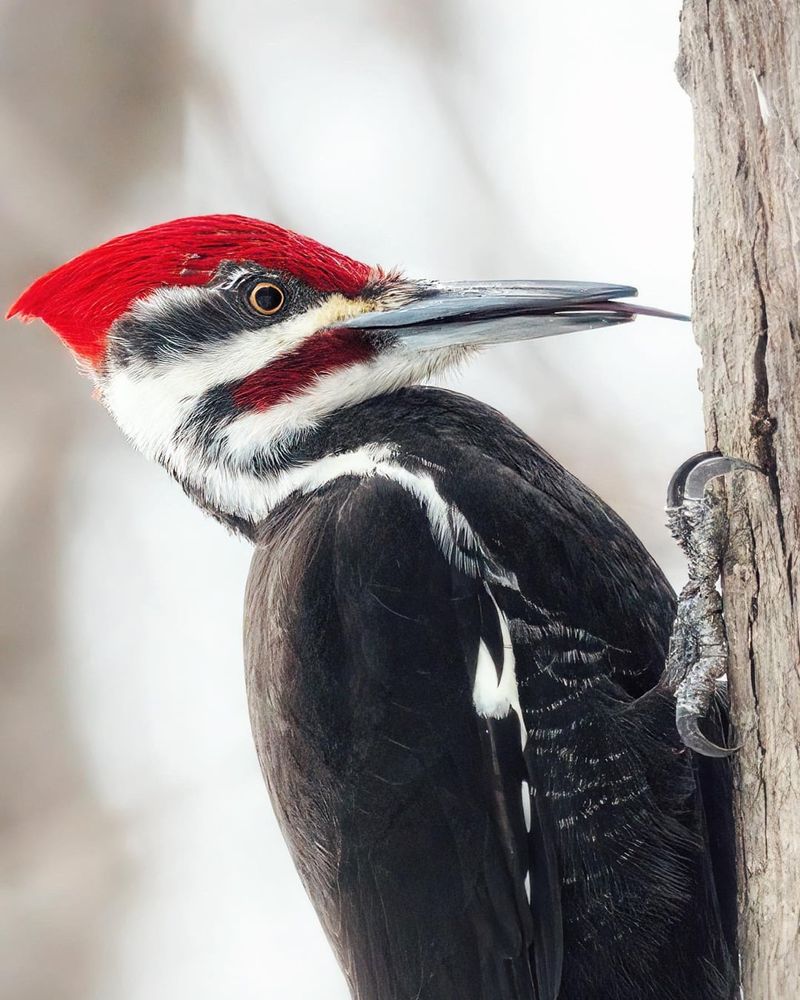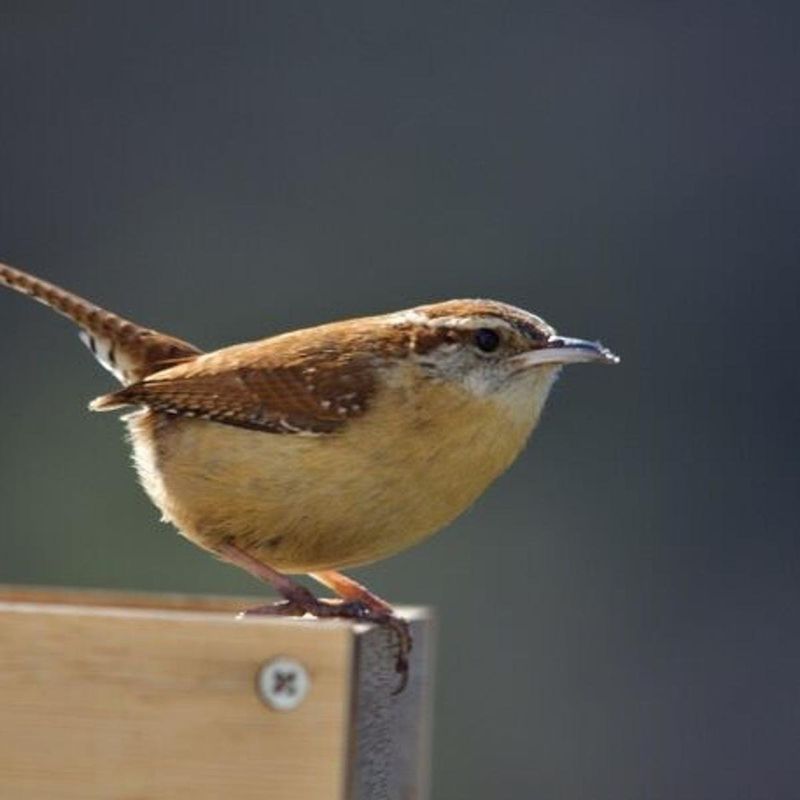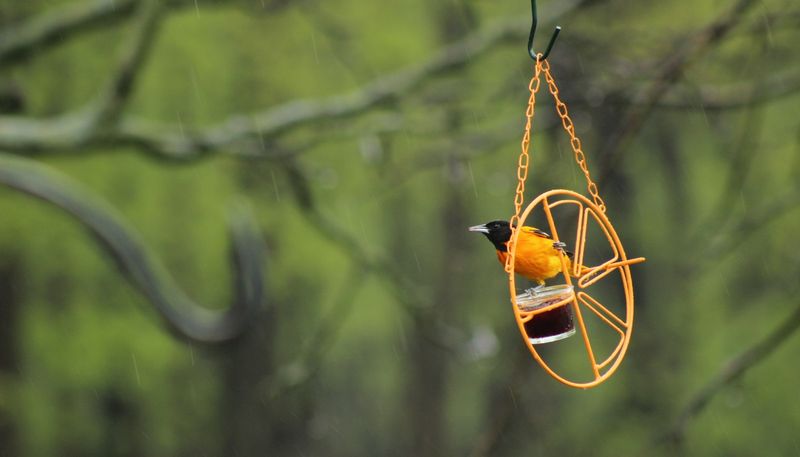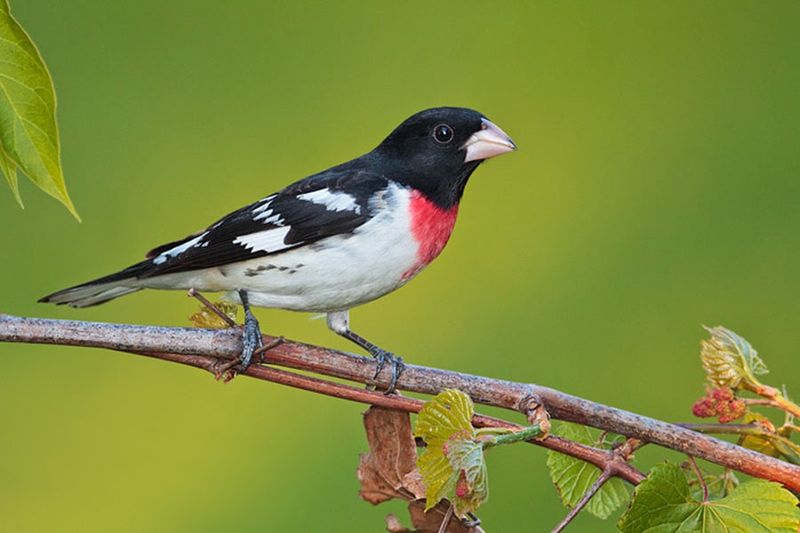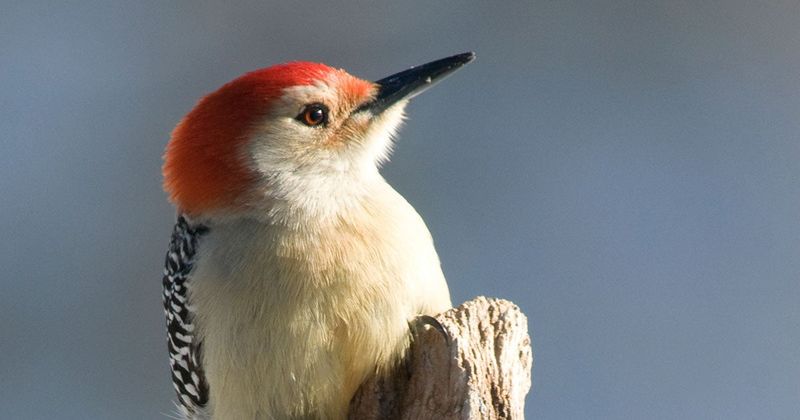Pennsylvania yards offer front-row seats to an incredible bird show all year round—from brilliant songbirds to majestic hawks. These feathered guests add color, sound, and charm to everyday outdoor moments, turning your garden into a mini sanctuary.
Spotting species like blue jays, cardinals, or finches isn’t just delightful—it’s a sign your space supports a thriving ecosystem. Birds often flock to yards that provide food, shelter, and safety, so their presence is nature’s thumbs-up.
By tuning in to the birds that visit, you deepen your connection to the land around you. Each chirp and flutter tells a story—and with a little attention, your yard can become a haven for wildlife and wonder alike.
1. Northern Cardinal
The bright red males are impossible to miss against Pennsylvania’s greenery or winter snow. Cardinals don’t migrate, staying faithful to their territories year-round.
Males feed females during courtship in a touching display of affection. I often hear their clear whistling songs before spotting them at my feeders.
They prefer sunflower seeds and will be among the first to visit new feeders in your yard.
2. American Robin
Robins hopping across lawns in search of worms are a classic Pennsylvania yard sight. Their orange-red breasts and cheerful morning songs announce spring’s arrival for many of us.
Unlike some backyard birds, robins rarely visit seed feeders. They prefer hunting for insects and worms in your grass.
My yard sees waves of robins after rain showers when worms come to the surface.
3. Black-Capped Chickadee
These tiny birds with black caps and white cheeks are among Pennsylvania’s most curious and fearless yard visitors. Their chick-a-dee-dee-dee call is instantly recognizable.
Chickadees will investigate everything new in your yard, often being the first to discover a fresh feeder. Their intelligence allows them to remember hundreds of food storage locations.
They’ve been known to eat from an outstretched hand with just a little patience.
4. Blue Jay
With their striking blue crest and loud personality, blue jays make their presence known in Pennsylvania yards. These intelligent birds are part of the crow family and can mimic hawk calls to clear other birds from feeders.
Blue jays cache food for later, helping spread oak trees by forgetting buried acorns. I’ve watched them stuff multiple peanuts in their throat pouch before flying off.
They prefer platform feeders with peanuts, sunflower seeds, and corn.
5. American Goldfinch
Summer brings bright yellow male goldfinches to Pennsylvania yards, though they’re present year-round in duller winter plumage. These small, acrobatic birds love to hang upside-down while feeding.
Unlike most songbirds, goldfinches wait until mid-summer to nest, timing their breeding with thistle seed availability. They’re strict vegetarians, feeding almost exclusively on seeds.
My nyjer seed feeders attract dozens during peak seasons.
6. Mourning Dove
The gentle cooing of mourning doves creates a peaceful backdrop in Pennsylvania yards. These plump, tan-colored birds often feed on the ground beneath feeders, cleaning up fallen seeds.
Mourning doves mate for life and can produce several broods each season. Their nests are notoriously flimsy platforms of twigs where you can sometimes see their eggs.
They prefer open areas with scattered trees and shrubs for quick escape from predators.
7. House Finch
Male house finches sport raspberry-red heads and breasts that brighten Pennsylvania feeders. Originally native to western states, they’ve become common throughout Pennsylvania since their introduction in the 1940s.
These social birds often feed in noisy groups, with males singing complex warbling songs to attract mates. The more carotenoid pigments in their diet, the brighter red the males become.
Sunflower seeds are their favorite at my feeders.
8. White-Breasted Nuthatch
These compact birds with blue-gray backs and white faces are the acrobats of Pennsylvania trees. Nuthatches move headfirst down trunks and branches, defying gravity in ways other birds can’t.
Their distinctive nasal “yank-yank” calls announce their presence before you spot them. They’ll wedge seeds into tree bark and hammer them open with their strong bills.
Last winter, a nuthatch visited my window feeder daily, always taking one sunflower seed at a time.
9. European Starling
These glossy black birds with speckled plumage are common but controversial visitors to Pennsylvania yards. Introduced from Europe in the 1890s, starlings gather in large, noisy flocks that can overwhelm other birds.
Their iridescent feathers change color in different lights, showing purples and greens. Starlings are skilled mimics, capable of copying other bird calls and even human speech.
Despite their invasive status, their murmurations create spectacular aerial displays.
10. Downy Woodpecker
The smallest woodpecker in Pennsylvania, these black and white birds are frequent visitors to suet feeders. Males have a small red patch on the back of their head that females lack.
Downies drum on trees not just for food but also to communicate and establish territory. Their tiny size allows them to forage on smaller branches that larger woodpeckers can’t access.
One pair nested in the dead limb of my maple tree last spring.
11. Dark-Eyed Junco
Pennsylvania yards welcome these “snowbirds” each winter with their slate-gray tops and white bellies. Juncos hop rather than walk on the ground, searching for seeds beneath feeders.
They breed in northern forests and mountains but descend to Pennsylvania yards when cold weather arrives. Their soft twittering calls and flash of white tail feathers during flight are winter staples.
For me, their arrival signals the true start of the cold season.
12. House Sparrow
These chunky brown birds are fixtures in Pennsylvania neighborhoods, especially near human structures. Males sport black bibs and gray caps, while females are plain brown with streaking.
Originally introduced from Europe, house sparrows thrive in urban and suburban environments. They’re highly adaptable, building nests in any cavity from birdhouses to store signs.
Their constant chirping creates the background soundtrack for many Pennsylvania yards.
13. Tufted Titmouse
With their jaunty crests and big black eyes, titmice bring personality to Pennsylvania feeders. Their loud “peter-peter-peter” calls seem too powerful for such a small bird.
Titmice are notorious for taking one seed at a time, flying to a perch to crack it open, then returning for more. They cache hundreds of seeds in fall for winter use.
A family of titmice visits my yard daily, always announcing their arrival with distinctive calls.
14. Eastern Bluebird
The brilliant blue backs and rusty breasts of male bluebirds make them jewels of Pennsylvania landscapes. These thrushes prefer yards with open spaces adjacent to scattered trees or fence posts for perching.
Bluebirds faced population declines but have rebounded thanks to nesting box programs across Pennsylvania. They primarily eat insects caught on the ground, rarely visiting seed feeders.
Providing mealworms can attract these stunning birds to your yard.
15. Pileated Woodpecker
Spotting this crow-sized woodpecker with its flaming red crest means your yard has mature trees. Pileated woodpeckers need large dead or dying trees for their rectangular excavations as they search for carpenter ants.
Their powerful drumming and loud, laughing calls echo through Pennsylvania woodlands. Each pair needs extensive territory with old-growth features.
When one visited my suet feeder last winter, neighbors came over just to glimpse this magnificent bird.
16. Carolina Wren
The rich, tea-kettle-tea-kettle song of Carolina wrens brightens Pennsylvania yards year-round. These cinnamon-colored birds with upturned tails explore every nook and cranny of gardens and shrubs.
Carolina wrens build dome-shaped nests in the strangest places – I’ve found them in hanging plants, old boots, and even mailboxes. Their insect-heavy diet makes them valuable garden allies.
Providing brush piles or dense shrubs will attract these charismatic birds to your yard.
17. Baltimore Oriole
The flash of brilliant orange against black signals a Baltimore oriole has found your Pennsylvania yard. These tropical migrants return each spring, announcing themselves with flute-like songs.
Orioles have a sweet tooth, readily visiting feeders with grape jelly, orange halves, or sugar water. Their remarkable hanging nests woven from plant fibers dangle from the ends of high branches.
My neighborhood orioles return to the same tall trees each May, a welcome sign of spring.
18. Rose-Breasted Grosbeak
The striking combination of black, white, and a rosy-red triangle on the chest makes male rose-breasted grosbeaks unmistakable visitors. Their massive seed-cracking bills handle even the toughest shells with ease.
These migrants pass through Pennsylvania yards primarily in spring and fall. Their rich, robin-like song has earned them the nickname “cut-throat” for the splash of red against their white breasts.
Several appear at my feeders each May, staying just long enough to refuel before continuing north.
19. Red-Bellied Woodpecker
Despite their name, the pale wash of red on their bellies is barely visible – it’s the bright red cap extending from the bill to the nape that makes these woodpeckers stand out in Pennsylvania yards.
Red-bellied woodpeckers have expanded their range northward in recent decades, becoming more common throughout Pennsylvania. They’re omnivorous, eating everything from insects to fruits, nuts, and seeds.
Their rolling “churr-churr” calls echo through my yard almost daily.

